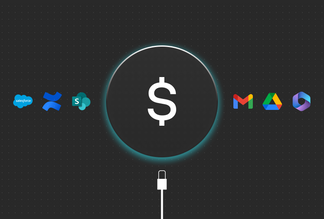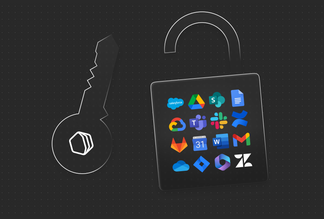

4 keys to building a cross-functional hybrid team
When employees with different backgrounds and skills come together to work on the same project, they form what’s known as a cross-functional team. Cross-functional teams unite those in different areas of expertise to work toward a shared goal.
Quite common in the workplace, modern cross-functional teams are facing different types of challenges as they collaborate in a hybrid or remote fashion.
Countless companies are ditching the legacy work model and shifting to a remote-friendly or hybrid model, putting pressure on developing async methods to build these cross-functional teams.
In this article, we’ll walk through the makings of a stand-out cross-functional team, what their role is in a hybrid workspace, and the best tips for how to build a cross-functional team at your company.
What does a cross-functional team look like?
A cross-functional team brings in members of different teams/departments to achieve a shared goal. It emphasizes broad collaboration in the ideation process.
For example, let’s say a new opportunity is presented to your company to pursue — maybe it’s entering a new market or territory, or developing a new product for your product suite.
In a project of this size, the work shouldn’t be left to one individual — or even one sole department. For these initiatives, you would probably need:
- Finance employees to plan out the project’s budget
- Marketers to come up with a strategy for branding and positioning
- Salespeople to develop a territory management plan
- Human resources professionals to think through a hiring and employee engagement strategy to support new demand
- Product experts to think through what should be created in order to capitalize on market demand
This diversity of both thought and backgrounds helps break the mold, challenge groupthink, and reach a consensus that is more likely to be successful when implemented. The differing viewpoints allow new challenges and opportunities to be confronted that otherwise might have been ignored or otherwise left unaddressed.
We’ve all heard the statement that “diverse teams perform better than non-diverse teams,” but Gartner specifically found that employee performance was 12% higher on diverse teams than non-diverse teams. In particular, Gartner’s Bruce Robertson encourages companies to “Look for ‘cognitive’ diversity, which is mixing people together with different thinking styles, habits, and perspectives.”
Why are cross-functional teams important for hybrid?
When we take a step back, remote and hybrid teams might be the best suited for cross-functional work if we take diversity into account. When workers have complete flexibility to determine how work works best for them, they can bring more to the table. Plus, remote work offers more equitable environments and more geographically diverse hiring pools.
The first step to creating a cross-functional organization within a hybrid model is to establish trust with your team. Enabling a supportive environment by encouraging risks, mistakes, and opinions improves the well-being of your company. And with all those qualities in a workplace, it’s hard not to grow.
Companies need to set up these cross-functional task forces for success not just in terms of the final deliverable, but with the resources, processes, and trust the team needs to fulfill their purpose.
Building your cross-functional team
Now that you’re clear on what a cross-functional team is and why it’s important, let’s walk through the steps of building one in a hybrid organization.
1. Begin with clarity & transparency
When a cross-functional team comes together, its members should be aligned with a common purpose and a common understanding of that purpose. Otherwise, the team could quickly find themselves at odds with one another or lacking role clarity.
Specifically, the team should be informed about the expectations of this collaboration, such as deadlines and deliverables. Any existing resources should also be shared with the team, like a memo on the project’s background and purpose.
This level of clarity and transparency should also be maintained for the entire time of collaboration. The team might rely on a shared directory to eliminate silos and document role responsibilities for everyone on the task force,
2. Keep goals aligned
Goals should be clearly established from the get-go for everyone to know the project’s primary goal, secondary goal(s), and measurements of success.
Teams can use the DARCI model to rally the team around the person most responsible for each sub-goal, as well as utilizing goal tracking software to share progress with the cross-functional team at large.
3. Embrace employee autonomy
It’s important to remember that everyone on a cross-functional team has their own speciality — that’s why they were appointed to the team in the first place. For managers, this means embracing employee autonomy, understanding the importance of knowing your employees and their abilities, and trusting them to do the work for which they were hired. Otherwise, you’ll risk micromanaging them, which is a leading reason why employees quit their jobs.
For individual contributors, it means living up to your potential as an employee. In a cross-functional group, you might be the only one representing your department, so embracing your autonomy is imperative to the team’s success.
4. Lead with empathy
Finally, a great cross-functional team needs great leadership. Cross-functional collaboration requires a leader who — outlined above — respects employee autonomy, keeps the team’s goals aligned, and communicates with transparency.
Normalcy no longer exists. There is no getting to the finish line, work has become flexible and will remain so until employees feel it’s no longer working. Leaders who remain adaptable and empathetic to these changes will gain the respect of employees who know their best interests are in mind.
Let’s put our people first
The best practice of putting employees first in a job has not undergone a paradigm shift, even though our working models have. Since cross-functional teams are usually formed to tackle new ground, it’s important to be patient and transparent with employees when building a cross-functional remote team.
When given the tools they need to trust each other, members of a cross-functional team will be able to collaborate seamlessly and produce high-quality deliverables — in any setting.
How can a Work Hub help?
With Qatalog's Org Chart feature you get a complete view of your company directory, alongside up-to-date information on what teams or individuals are working on, such as key initiatives or quarterly goals. It makes it easy for your team to see who’s who, and get details on Projects across teams.



